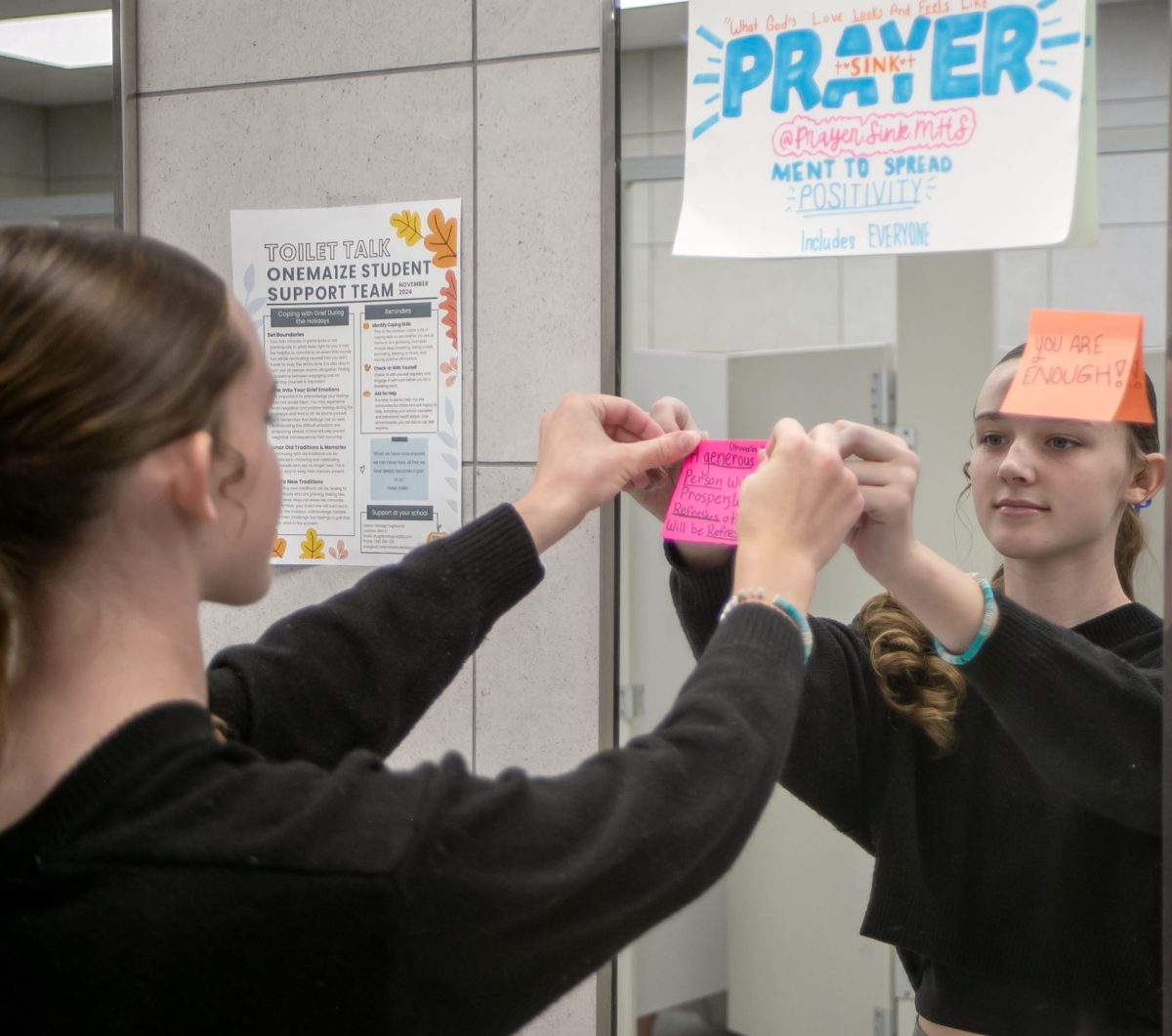Affirmative Action Solicits Discrimination
March 26, 2020
Originally published in the Bullseye Issue 2 newsmagazine
Despite our progress towards racial equity, discrimination of race and sex still takes place in our everyday lives at school and even the part-time workplace for teens.
Surprisingly, it’s not against who you may think.
On March 6, 1961, President John F. Kennedy required that government employers “not discriminate against any employee or applicant for employment because of race, creed, color, or national origin” and “take affirmative action to ensure that applicants are employed, and that employees are treated during employment, without regard to their race, creed, color, or national origin.”
These “affirmative action” policies then made their way onto college campuses in the early 1960’s, using the same executive order by JFK. After Kennedy’s death, Lyndon B. Johnson instituted a secondary executive order giving benefits based on sex to women. For upperclassmen in high school in 2020, this means possible exclusion from their college of choice for someone less qualified academically due to race, gender/or sexual orientation status.
Affirmative action policies are the granting of scholarships and grants, status quos of attendance, and modifying ACT and SAT standards for Black and Hispanic students to attend universities by lower academic measurements than white students.
These may have served a role during the Civil Rights movement of the 1960’s that provided Blacks and a small portion of Hispanics the privilege of college that previously was a rigid goal when faced with racial discrimination.
Since then, the present day effects have been widely questioned by both sides of the political spectrum about their effectiveness overall. Whites and Asians have been the target of diversity goals, with Ivy League standout Harvard being the most prominent instance. Whites and Asians have been the target of diversity goals, with Ivy League standout Harvard being the most prominent instance.
Harvard is very diverse, with around 56 percent being minorities. Nearly half of the minority population is made up of Asians. Harvard (and many other colleges) evaluate applicants through three categories: academic achievement, extracurricular activities and personal qualities.
According to the National Review, Asians consistently scored higher in academics (GPA, ACT, SAT) and extracurricular activities, yet are admitted at lower rates due to an elevated standard.
According to the Heritage Foundation, Harvard’s internal affairs rated Asians’ and Whites’ “personal qualities” significantly lower while maxing out Blacks and Hispanics. In 2013, Asians made up around 19 percent of incoming freshman at Harvard, and had an acceptance rate around 23 percent.. Due to these new racial standards, both Asian and White acceptance rates were lowered to around 7 percent, and the remaining percentage of the acceptance rate was applied to other minority groups, most prominently being Blacks and Hispanics.
According to The Harvard Crimson, Harvard’s own internal review, if their rigged “personal quality” standards had not been applied, Asians’ acceptance rate would have met around 43%, and Whites acceptance rate would have made a jump as well.
In 2018, a group called Students for Fair Admissions sued Harvard. The case quickly propelled to a federal court. The court mandated Harvard release admissions records, and the accounts of an “elevated standard” were reinforced by the reports.
For instance, Harvard required a 1370 on the PSAT for Asians, a 1310 for Whites, and around 1270 for students of color (although it varies year to year).
These same policies do not just apply to Harvard. In 2012, Texas University placed Blacks in the top 52 percentile (including financial benefit) at the same rate as Whites in the top 9 percent.
Furthermore, while quotas and higher standards lie below the surface, there are thousands of scholarships provided nationally each year that are exclusively afforded to people based off of race, sex and sexual orientation.
Wichita State University, one of the largest universities in Kansas, employs affirmative action tactics with scholarships as well as with hiring practices.
“WSU’s Office of Equal Opportunity analyzes the WSU workforce each year to evaluate whether we areemploying women and people of color at the expected rates given the demographics of the qualified labor pool,” says WSU’s affirmative action page. “When there is a significant gap between our employment rate for women or people of color and their availability in the qualified population, the university strives to make extra efforts to recruit qualified members from the underutilized group.” These harmful policies have stayed present for the sake of diversity of past subjugated high schoolers and to even out the playing field so to speak. When looking through university policy on affirmative action online, universities typically assert widespread discrimination on the same basis they afford these exclusive privileges (race, sex, sexual orientation.)
While the collective groups benefiting from these policies may wish to retain them, statistically the recipients do not profit either.
When placement happens without proper qualifications applied across the board, students of any race or sex may be unprepared for prestigious colleges with high academic track records.
According to Springer Research, affirmative action recipients have twice the dropout rate compared to the regular rate. Richmond County Daily Journal reports that over half of affirmative action recipients have an average class placement of the bottom 20 percent. That number drops to 10 percent in law schools.
In addition, affirmative action beneficiaries fail the bar exams four times the rate of non affirmative action recipients according to UCLA School of Law.
In 1996, California introduced Proposition 209 which barred state governmental institutions from considering race, sex, or ethnicity, specifically in public employment, public contracting, and public education.Although private colleges continued their affirmative action practices, public universities could not.
Following this proposition, Black attendance dropped, graduation rates for these groups in a four-year bachelor’s program doubled across California.
Still, chief administrators, primarily at all the UC campuses and Berkley, attacked the proposition as racist. The reason? They did not believe minorities (primarily Blacks) and women could meet the same standards as male Asians and Whites.
University administrations keep affirmative action policies in place not to lessen discrimination, or benefit minorities, but purely for the dollar bills it may bring into the university.
In order to maintain minority goals that correlate with the demographics of the general population, universities must requires money for outreach, scholarships, and to hire more people that may or may not be qualified for the position. At times, they may be hired if they present the need for women or more racial minorities.
With juniors and seniors entering the workforce and college, what we can learn about affirmative action is that not only does it inhibit everyone and every college that partakes, but is simply unfair towards creating an equal playing field for all respective seniors.
Perceiving everyone through a sphere of their group identity over their individual identity dismisses the value of the individual, and undermines the uniqueness and capability of the individual no matter the race, sex, or sexual orientation.
Perpetuating group identity does nothing but divide communities along these same guidelines. Affirmative action has proven to be a recipe for disaster due to under qualified students taking key spots and elite scholarships from those more academically qualified on paper.
To view one or more races or one sex as incapable of meeting the standards of everyone else is discrimination. To benefit an entire collective based on none other than race, sex, or sexual orientation is discrimination.
Elimination of group identity and emphasis on diversity of thought would mend division and create uniformity for our next generation.





